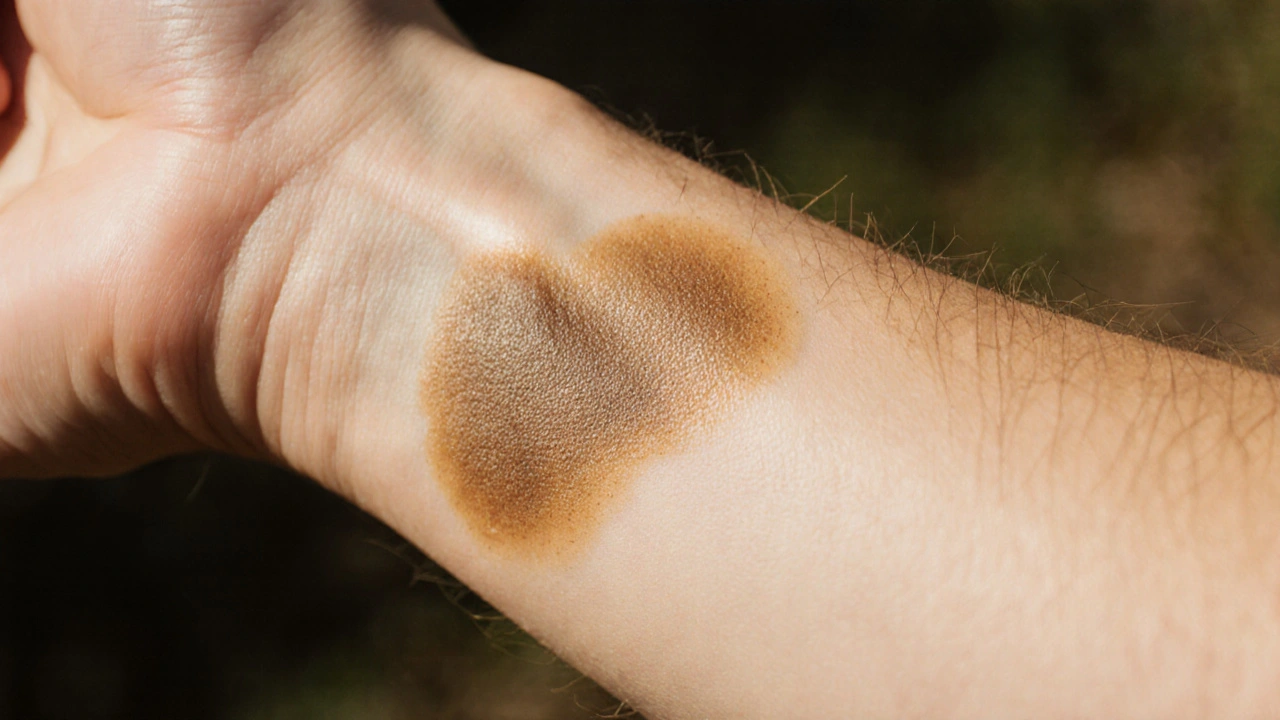Skin Discoloration Causes – What Really Triggers Those Spots
When you stare at a patch of uneven tone, you want to know the story behind it. Skin discoloration causes, the underlying factors that change the color of your skin, ranging from pigment over‑production to loss of pigment. Also known as skin tone irregularities, they can signal anything from a harmless sunburn to an underlying medical condition. Understanding these triggers helps you pick the right product or doctor visit, instead of guessing. Skin discoloration causes often fall into three buckets: external insults, internal hormonal shifts, and skin‑specific diseases.
Common Triggers and How They Interact
One of the most frequent culprits is hyperpigmentation, dark patches caused by excess melanin production after inflammation, UV exposure, or hormonal changes. Think of a fresh acne scar that stays brown weeks later – that’s melanin going into overdrive. The opposite end of the spectrum is hypopigmentation, lighter spots that appear when melanin cells are damaged or destroyed. Conditions like vitiligo or a severe burn can wipe out pigment, leaving a stark contrast to surrounding skin. Eczema, formally called atopic dermatitis, brings its own palette of discoloration. Eczema, a chronic inflammatory skin condition that often leads to red, itchy patches and post‑inflammatory pigment changes can first darken an area (post‑inflammatory hyperpigmentation) and later leave a pale mark once the rash clears. This back‑and‑forth is why many patients see a patchy look for months after a flare‑up. Hormonal shifts give rise to melasma, brown to gray‑brown patches usually on the cheeks, forehead, or upper lip, triggered by estrogen and progesterone fluctuations. Pregnancy, birth‑control pills, and even stress can tip the balance, prompting melanocytes to produce more pigment in specific zones. Sunlight acts like a catalyst, amplifying melasma’s intensity; that’s why dermatologists stress sunscreen as the first line of defense. Putting these pieces together, you get several semantic triples: Skin discoloration causes encompass hyperpigmentation, hypopigmentation, and melasma; Effective treatment requires understanding the underlying condition, whether it’s eczema or hormonal imbalance; and Sun protection influences both hyperpigmentation and melasma. Each factor interlocks with the others, so a holistic view beats a single‑symptom fix. Beyond the big four, inflammation from acne, allergic reactions, or medication side‑effects can also shift color. Antifungal agents like Lamisil target fungal infections that sometimes leave brown rings, while topical steroids used for eczema may temporarily lighten the skin if over‑used. Recognizing whether a discoloration is a primary disease (like melasma) or a secondary effect (post‑inflammatory change) guides you toward the right therapy – a lightening cream, a steroid, or simply a diligent sunscreen routine. In short, the landscape of skin tone changes is a map of cause and effect. By naming the offender – hyperpigmentation, hypopigmentation, eczema, or melasma – you can match it with the proper answer. Now that you’ve got the basics, scroll down to see detailed articles on specific medications, treatment comparisons, and practical tips that dive deeper into each cause. Whether you’re hunting for safe generic options, looking for the best topical for eczema‑related spots, or trying to understand how hormonal shifts affect your face, the collection below has you covered.
